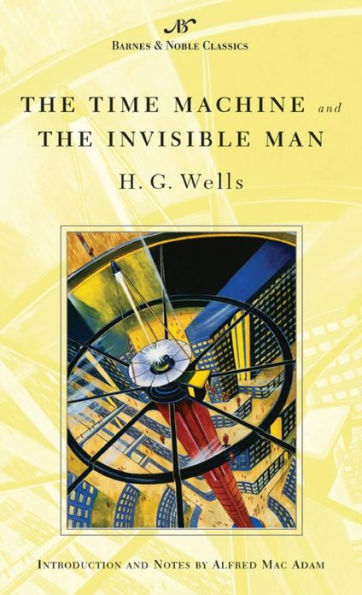Mass market paperback, 320 pages
English language
Published Aug. 18, 2003 by Barnes & Noble Classics.

Mass market paperback, 320 pages
English language
Published Aug. 18, 2003 by Barnes & Noble Classics.
The Time Machine, H. G. Wells’s first novel, is a tale of Darwinian evolution taken to its extreme. Its hero, a young scientist, travels 800,000 years into the future and discovers a dying earth populated by two strange humanoid species: the brutal Morlocks and the gentle but nearly helpless Eloi.
The Invisible Man mixes chilling terror, suspense, and acute psychological understanding into a tale of an equally adventurous scientist who discovers the formula for invisibility—a secret that drives him mad.
Immensely popular during his lifetime, H. G. Wells, along with Jules Verne, is credited with inventing science fiction. This new volume offers two of Wells’s best-loved and most critically acclaimed “scientific romances.” In each, the author grounds his fantastical imagination in scientific fact and conjecture while lacing his narrative with vibrant action, not merely to tell a “ripping yarn,” but to offer a biting critique on the world around him. …
The Time Machine, H. G. Wells’s first novel, is a tale of Darwinian evolution taken to its extreme. Its hero, a young scientist, travels 800,000 years into the future and discovers a dying earth populated by two strange humanoid species: the brutal Morlocks and the gentle but nearly helpless Eloi.
The Invisible Man mixes chilling terror, suspense, and acute psychological understanding into a tale of an equally adventurous scientist who discovers the formula for invisibility—a secret that drives him mad.
Immensely popular during his lifetime, H. G. Wells, along with Jules Verne, is credited with inventing science fiction. This new volume offers two of Wells’s best-loved and most critically acclaimed “scientific romances.” In each, the author grounds his fantastical imagination in scientific fact and conjecture while lacing his narrative with vibrant action, not merely to tell a “ripping yarn,” but to offer a biting critique on the world around him. “The strength of Mr. Wells,” wrote Arnold Bennett, “lies in the fact that he is not only a scientist, but a most talented student of character, especially quaint character. He will not only ingeniously describe for you a scientific miracle, but he will set down that miracle in the midst of a country village, sketching with excellent humour the inn-landlady, the blacksmith, the chemist’s apprentice, the doctor, and all the other persons whom the miracle affects.”